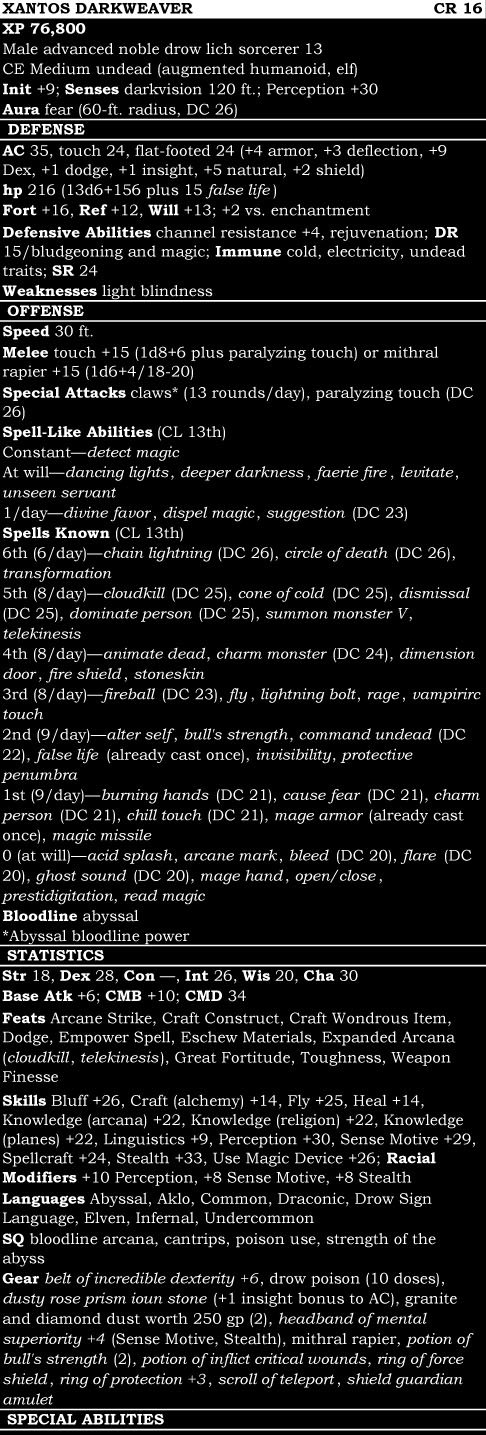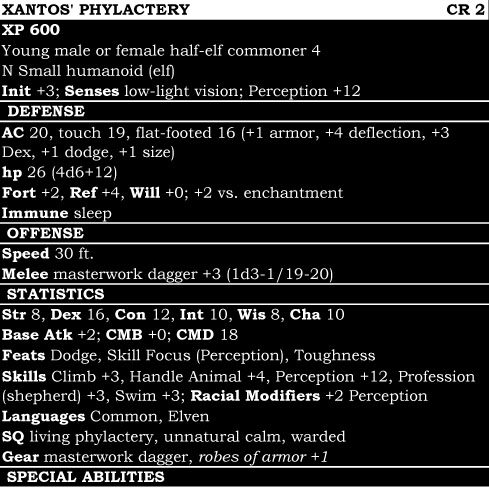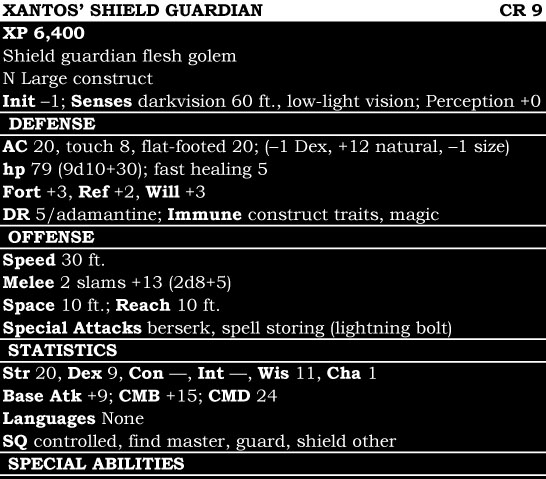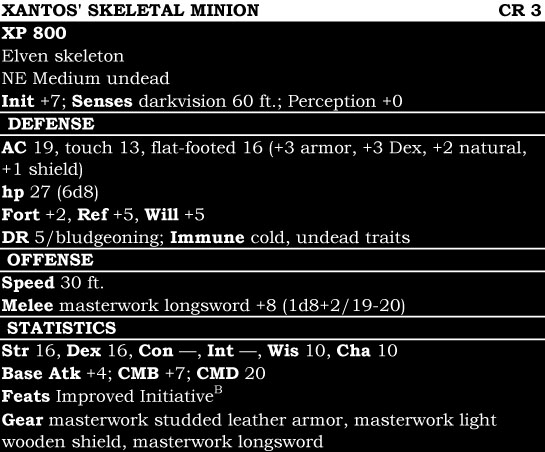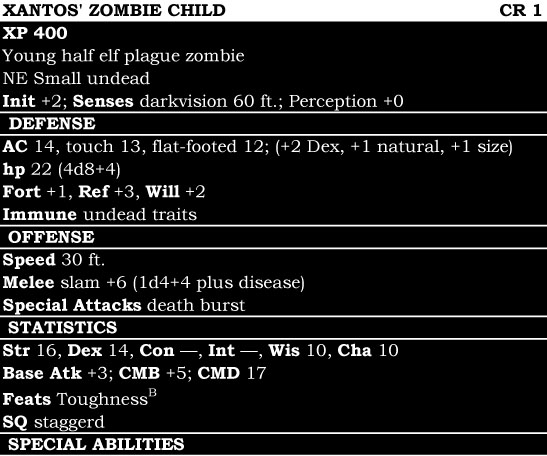The Child and the Lich
Welcome again to Masters and Minions, where I strive to give you interesting NPCs and encounters that can be placed easily into your game. This week’s encounter is with an ancient and vile lich named Xantos Darkweaver. In life, Xantos was a power-hungry drow sorcerer; his hunger for power was so great, in fact, that not even death could slow him down. Recently, Xantos has been terrorizing the innocent people of Star’s Veil. He has been abducting the children of Star’s Veil for use in his terrible arcane experiments. His most recent experiment was to see if he could turn a living being in a suitable alternative for his phylactery. Unlike most liches, Xantos enjoys taunting his enemies by keeping his phylactery out in the open, and what better way to both protect and display his phylactery than to have it be something that they could never bring themselves to destroy. Many lives were lost before he was successful, but he was finally able to turn the body of one of the abducted children into his living phylactery. To keep his phylactery obedient, Xantos has cast dominate person on the child. If Xantos is slain and the PCs don’t free the child from being Xantos’ phylactery, then he can choose to either rejuvenate as normal or to come back to life in the child’s body (see living phylactery, below). If Xantos chooses to come back to life as the child, he will have to create a new phylactery.
The process of creating a living phylactery has bonded his essence to the child’s soul, so even if the child is slain and then later resurrected, he would still be the phylactery. The only way to truly destroy the phylactery is to kill the child and leave him dead, or to use a wish or miracle spell to separate his soul from the phylactery.
The statistics for carrion golems can be found in the Pathfinder Bestiary 2.
Tactics
Xantos prefers to stay at a range while his shield guardian flesh golem (comprised of the remains of his failed experiments) wades into battle with his two carrion golems (also made up of failed experiments) and undead minions (4 – 8 skeletal minions and 8 – 12 zombie children). During combat, Xantos keeps his living phylactery next to him at all times. Xantos will often refer to the child as his heart; he does this to both disturb his attackers and to hint at the child being his phylactery. Though Xantos knows spells capable of taking over his opponents’ minds, he prefers big and flashy spells such as fireball or chain lightning.
When his golems and undead are dealt with, he switches from fighting from a range to melee combat, first casting stoneskin (only if he thinks his attackers have weapons that bypass his regular DR), then casting transformation. Xantos will flee immediately if the child is slain (whether accidentally or purposefully).
Xantos Darkweaver
The elf standing before you is unmistakably undead, with over half of his face devoid of skin and flesh. The semi-skeletal figure’s right eye socket is hollow except for an eldritch blue glow, while his left is partially exposed, its lid rotted away. Clinging to this undead abomination’s robes is a half-elf child dressed in identical robes.
Fear Aura (Su)
Creatures of less than 5 HD in a 60-foot radius that look at the lich must succeed on a Will save or become frightened. Creatures with 5 HD or more must succeed at a Will save or be shaken for a number of rounds equal to the lich's Hit Dice. A creature that successfully saves cannot be affected again by the same lich's aura for 24 hours. This is a mind-affecting fear effect.
Paralyzing Touch (Su)
Any living creature a lich hits with its touch attack must succeed on a Fortitude save or be permanently paralyzed. Remove paralysis or any spell that can remove a curse can free the victim (see the bestow curse spell description, with a DC equal to the lich's save DC). The effect cannot be dispelled. Anyone paralyzed by a lich seems dead, though a DC 20 Perception check or a DC 15 Heal check reveals that the victim is still alive.
Rejuvenation (Su)
When a lich is destroyed, its phylactery (which is generally hidden by the lich in a safe place far from where it chooses to dwell) immediately begins to rebuild the undead spellcaster's body nearby. This process takes 1d10 days—if the body is destroyed before that time passes, the phylactery merely starts the process anew. After this time passes, the lich wakens fully healed (albeit without any gear it left behind on its old body), usually with a burning need for revenge against those who previously destroyed it.
Xantos’ Phylactery
This half-elven child’s complexion is quite pale, and his eyes are sunken back and glazed over. He is dressed in the same exact style of robes as his undead master.
Living Phylactery (Su)
This child serves as Xantos’ phylactery, allowing Xantos to be able to rejuvenate after he is killed as normal. Additionally, Xantos can instead choose to use the child as his new body (consuming the child’s soul in the process); over the course of 1d10 days the child’s body begins to take on the physical characteristics of Xantos’ living form before rapidly decaying at the end of that period of time. During this period of metamorphosis, Xantos has the child’s Strength and Dexterity scores instead of his own and a Constitution score of 12, and he is temporarily “alive” and doesn’t possess the special defenses granted from being a lich. Once the process is complete the child loses the living phylactery, unnatural calm, and warded special qualities, the child’s soul is lost, and Xantos becomes undead once again. The living phylactery special quality can only be safely removed by a wish or miracle spell cast before resurrecting the child.
Unnatural Calm (Ex)
Due to the traumatizing effects of being experimented, on the child phylactery is immune to Xantos’ fear aura and is affected by a constant calm emotions spell.
Warded (Su)
This ability functions like a constant nondetection spell cast upon the child. Additionallly, this ability grants a +4 deflection bonus to the warded creature’s AC. Xantos can end or restore this protection as a move action.
Xantos’ Shield Guardian
This horrendous abomination looks to be made up of a patchwork of elven flesh. Some parts are easily recognized as being from the town’s missing children.
Berserk (Ex)
When a flesh golem enters combat, there is a cumulative 1% chance each round that its elemental spirit breaks free and the golem goes berserk. The uncontrolled golem goes on a rampage, attacking the nearest living creature or smashing some object smaller than itself if no creature is within reach, then moving on to spread more destruction. The golem's creator, if within 60 feet, can try to regain control by speaking firmly and persuasively to the golem, which requires a DC 19 Charisma check. It takes 1 minute of inactivity by the golem to reset the golem's berserk chance to 0%.
Controlled (Ex)
A shield guardian that has the berserk special attack cannot go berserk as long as the wearer of its amulet is within 30 feet.
Find Master (Su)
As long as a shield guardian and its amulet are on the same plane, the shield guardian can locate the amulet's wearer (or just the amulet, if it is removed after the guardian is called).
Guard (Ex)
If ordered to do so, a shield guardian moves to defend the wearer of its amulet. All attacks against the amulet wearer take a –2 penalty when the shield guardian is adjacent to its master.
Immunity to Magic (Ex)
A flesh golem is immune to any spell or spell-like ability that allows spell resistance. In addition, certain spells and effects function differently against the creature, as noted below.
- A magical attack that deals cold or fire damage slows a flesh golem (as the slow spell) for 2d6 rounds (no save).
- A magical attack that deals electricity damage breaks any slow effect on the golem and heals 1 point of damage for every 3 points of damage the attack would otherwise deal. If the amount of healing would cause the golem to exceed its full normal hit points, it gains any excess as temporary hit points. A flesh golem gets no saving throw against attacks that deal electricity damage.
Shield Other (Sp)
The wearer of a shield guardian's amulet can activate this defensive ability as a standard action if within 100 feet of the shield guardian. Just as the spell of the same name, this ability transfers to the shield guardian half the damage that would be dealt to the amulet wearer (note that this ability does not provide the spell's AC or save bonuses). Damage transferred in this manner bypasses any defensive abilities (such as immunity or damage reduction) the golem possesses.
Spell Storing (Sp)
A shield guardian can store one spell of 4th level or lower that is cast into it by another creature. It “casts” this spell when commanded to do so or when a predefined situation arises. Once this spell is used, the shield guardian can store another spell (or the same spell again).
Skeletal Minions
These elven skeletons most likely came from some very unlucky town guards. They each brandish their freshly sharpened longswords and fine oak shields.
Zombie Children
These zombies appear to be malnourished and diseased elven children. They are dressed in commoner’s outfits and each carry a toy they prized in life.
Death Burst (Ex)
When a plague zombie dies, it explodes in a burst of decay. All creatures adjacent to the plague zombie are exposed to its plague as if struck by a slam attack and must make a Fortitude save or contract zombie rot.
Disease (Su)
The slam attack—as well as any other natural attacks—of a plague zombie carries the zombie rot disease.
Zombie rot: slam; save Fort DC = 10 + 1/2 the zombie’s Hit Dice + the zombie’s Cha modifier; onset 1d4 days; frequency 1/day; effect 1d2 Con, this damage cannot be healed while the creature is infected; cure 2 consecutive saves. Anyone who dies while infected rises as a plague zombie in 2d6 hours.
Staggered (Ex)
Zombies have poor reflexes and can only perform a single move action or standard action each round. A zombie can move up to its speed and attack in the same round as a charge action.



